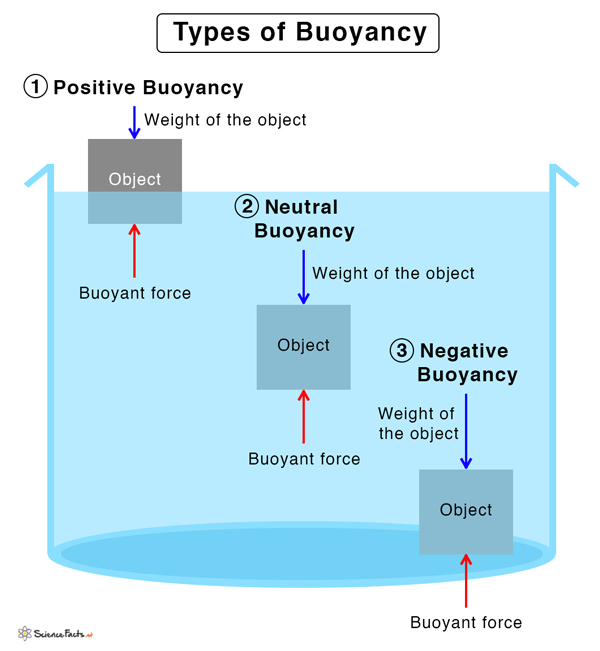Who Discovered Buoyancy Greek mathematician Archimedes, around 250 BC, discovered the law of buoyancy, which is today known as Archimedes’ principle.
Buoyancy and Archimedes Principle
Buoyant Force: How Does Buoyancy Work
Types of Buoyancy
Buoyancy Examples
Buoyant Force Equation: Law of Buoyancy
Applications of Buoyancy
1. Positive Buoyancy
When the weight of the fluid displaced by the object is more than the object’s weight, then the phenomenon is known as positive buoyancy. In this case, the object will float on the surface of the fluid.
2. Negative Buoyancy
When the weight of the fluid displaced is less than the object’s weight, it is called negative buoyancy. In this case, the object will sink.
3. Neutral Buoyancy
When the weight of the fluid displaced is equal to the object’s weight, it is called neutral buoyancy. In this case, the object the object neither sinks nor rises. It will be suspended in the fluid.
Boat sailing on the riverIceberg floating on waterA person with a life vest floating on waterShip floating on the oceanHelium balloon rising in the air
How to find Buoyant Force
Suppose an object of volume V is immersed in a fluid of density ρ. The object will displace an equal volume of the fluid. The mass of the liquid displaced is, M = r x V The weight of the displaced liquid is, W = M x g Or, W = r x V x g According to Archimedes’ principle, Loss of the object’s weight = Weight of the displaced liquid This loss of weight is the thrust or buoyant force (Fb). Therefore, Buoyant Force Formula: Fb = r X g X V Unit of Buoyant Force: Newton or N This equation is also called the law of buoyancy. It gives a relationship between buoyancy and density. As can be seen, the buoyant force is proportional to the density. The factors that affect buoyancy are:
The density of the fluidThe volume of the fluid displacedAcceleration due to gravity
The buoyant force causes objects to float. The point on the object where it is applied is called the center of buoyancy. Water Buoyancy: Water applies an upward thrust on objects that are immersed in it. Its density is 997 kg/m3, so its buoyant force is. Fb = 997 kg/m3 x 9.81 m/s2 x V Or, Fb = 9781 kg/m2s2 x V Saltwater’s density is even higher, at 1024 kg/m3, which explains why it is easier to float. Air Buoyancy: Like water, air exerts an upward thrust on objects that fall through or are suspended in it. Its density is 1.225 kg/m3.
To measure the volume and density of objectsTo measure the relative densities of liquids using a hydrometerTo control the position and depth of a submarine by filling its ballast tank with waterTo control the position and height of a hot air balloon by varying the quantity of the hot air insideTo enable fish to maneuver through water by filling their bladder with gas



